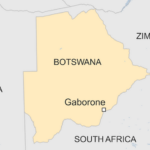Unveiling the Beauty and Diversity of Brazil
Nestled in South America, Brazil is a country that captivates with its vastness and diversity. From its sprawling rainforests to vibrant cities, Brazil offers an immersive experience that will leave you spellbound. With a rich blend of cultures, breathtaking landscapes, and a zest for life, Brazil is a destination that appeals to all senses.

Cultural Richness: A Melting Pot of Traditions and Festivities
Brazil is a country renowned for its cultural richness, a vibrant melting pot of traditions and festivities that reflect the diverse heritage of its people. With influences from Indigenous, European, African, and Asian cultures, Brazil’s cultural tapestry is a fascinating blend of customs, music, dance, and cuisine.
One of the most iconic aspects of Brazilian culture is its music, particularly the lively rhythms of Samba and Bossa Nova. With its roots in African and Indigenous music, Samba is the heart and soul of Brazil’s Carnival celebrations. During Carnival, the nation comes alive with elaborate parades, colorful costumes, and infectious music, attracting millions of locals and tourists.
In addition to Carnival, various regional festivals showcase Brazil’s cultural diversity. The Bumba Meu Boi festival in the Northeast celebrates a blend of Indigenous, African, and Portuguese influences, featuring theatrical performances and traditional music. The Festa Junina, held in June, honors Catholic saints and includes dance, food, and bonfires originating in Portuguese and Indigenous customs.
Brazil’s cuisine is another reflection of its cultural fusion. Feijoada, a delicious stew of black beans and various meats, represents a blending of African and Portuguese flavors. Acarajé, a popular street food, originated from the African Yoruba culture and featured deep-fried bean cakes filled with shrimp and spices.
Moreover, Brazil’s Indigenous heritage is crucial in shaping the country’s identity. The Amazon Rainforest is home to numerous Indigenous tribes with unique customs and traditions, emphasizing the profound connection with nature and biodiversity.
Religious celebrations are also essential components of Brazil’s cultural fabric. Catholicism, brought by the Portuguese colonizers, remains the predominant religion, but Afro-Brazilian religions like Candomblé and Umbanda have gained significant followings and influenced local customs and rituals.
Throughout the country, art and craftsmanship celebrate Brazil’s cultural diversity. Traditional crafts like ceramics, weaving, and woodcarving are passed down through generations, preserving the cultural heritage of various regions.
Despite the challenges posed by globalization and modernization, Brazil remains committed to preserving its rich cultural heritage. Various cultural centers, museums, and festivals actively promote and celebrate the country’s traditions, ensuring that Brazil’s melting pot of customs and festivities continues to thrive and inspire future generations. The cultural richness of Brazil serves as a testament to the beauty and resilience of a nation that embraces its past while embracing its future with open arms.
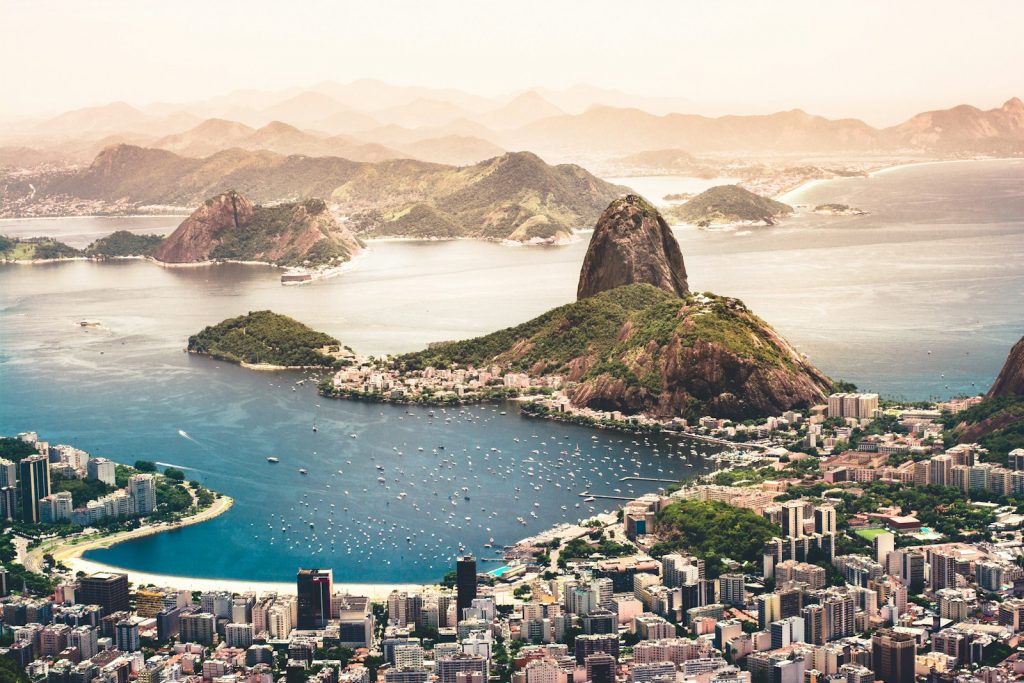
Breathtaking Natural Landscapes: From the Amazon Rainforest to Iguazu Falls
Breathtaking natural landscapes abound in Brazil, offering visitors a diverse and awe-inspiring array of natural wonders. The country’s beauty captivates travelers from the dense and mystical Amazon Rainforest to the thundering Iguazu Falls.
The Amazon Rainforest, often called the “lungs of the Earth,” is the world’s largest tropical rainforest, covering an area of approximately 5.5 million square kilometers. It extends across nine countries, most of which are within Brazil’s borders. This biodiverse paradise is home to an astounding variety of plant and animal species, many of which remain undiscovered by scientists. The dense foliage, intertwined vines, and winding rivers create an enchanting and mysterious atmosphere where the sounds of exotic wildlife reverberate through the forest.
Navigating the Amazon, visitors encounter indigenous communities that have lived harmoniously with the forest for generations, preserving their traditions, cultures, and deep connection to the land. Immersing oneself in this verdant wilderness is a humbling experience that highlights the delicate balance between humanity and nature.
In the southern region of Brazil lies the awe-inspiring Iguazu Falls, a UNESCO World Heritage Site and one of the most spectacular waterfalls in the world. Straddling the border between Brazil and Argentina, the falls consist of approximately 275 individual cascades, stretching nearly 2.7 kilometers across the Iguazu River. The immense power and force of the falls create a mesmerizing spectacle of thundering water, mist, and rainbows, leaving visitors breathless.
Exploring the falls from different vantage points reveals their grandeur and diversity. The most famous of the falls is “Garganta del Diablo” or the “Devil’s Throat,” a U-shaped cascade that stands at the heart of the falls. Witnessing the waters plummeting into the abyss from various viewpoints, including boat rides and walkways, allows travelers to appreciate nature wonderfully.
Both the Amazon Rainforest and Iguazu Falls are a testament to the unparalleled beauty of nature and serve as reminders of the importance of conservation and sustainable practices. As visitors stand in awe of these breathtaking landscapes, they are inspired to protect and preserve these invaluable treasures for generations.

A Soccer Nation: The Passion and Love for the Beautiful Game
Brazil, often referred to as “The Soccer Nation,” has a deep and abiding passion for the beautiful, unparalleled game worldwide. Soccer, or fuel as it’s known in Brazil, is not just a sport but a way of life ingrained in the country’s culture and identity.
Brazil’s love for soccer can be traced back to the early 20th century when British immigrants introduced the sport. Over time, it grew exponentially in popularity, capturing the hearts of Brazilians from all walks of life. Soccer became a symbol of unity, transcending social and economic barriers, as people of different backgrounds united under the banner of their favorite teams.
One of the main reasons for Brazil’s soccer fervor is its rich history of success. The Brazilian national team boasts an unrivaled record, having won the FIFA World Cup five times, the most by any nation. Legendary players like Pelé, Zico, Romário, Ronaldo, and Ronaldinho have become national icons and sources of inspiration for aspiring young talents.
The way Brazilians play soccer reflects their passion for creativity and flair. The jogo bonito, or the beautiful game, is synonymous with Brazil’s style of play. It emphasizes skillful dribbling, quick and precise passing, and an array of mesmerizing tricks and flicks that captivate fans worldwide. Soccer is played with a joyous spirit, and even in the most intense matches, Brazilian players often exhibit a smile and enthusiasm for the sport.
In Brazil, soccer is not confined to stadiums or professional leagues; it is part of daily life. The streets, beaches, and public squares become impromptu pitches where kids and adults alike gather to showcase their skills and share their love for the sport. Soccer is integral to family gatherings, celebrations, and social events, bringing people together and fostering a sense of community.
The soccer clubs in Brazil are like institutions, with fans fiercely loyal to their teams. Rivalries between clubs, such as Flamengo and Fluminense in Rio de Janeiro or Palmeiras and Corinthians in São Paulo, are intense and generate passionate support beyond mere fandom.
The entire nation comes to a standstill during major international competitions, such as the World Cup or Copa América. Offices close, schools suspend classes, and streets become adorned with yellow and green, the colors of the Brazilian flag. Soccer becomes a unifying force as millions gather to cheer on their national team, hoping for another moment of glory.
Despite socio-economic challenges, soccer in Brazil remains a source of hope and aspiration for many young talents seeking to escape poverty and improve their lives. Soccer academies and talent development programs are widespread, nurturing the next generation of footballing stars and ensuring the legacy of the sport lives on.
In conclusion, the passion and love for the beautiful game of soccer run deep in the veins of Brazilians. It is more than just a sport; it reflects their spirit, creativity, and resilience. Soccer in Brazil is a celebration of life, and it continues to be a defining aspect of the nation’s identity, captivating hearts both within Brazil and across the globe.
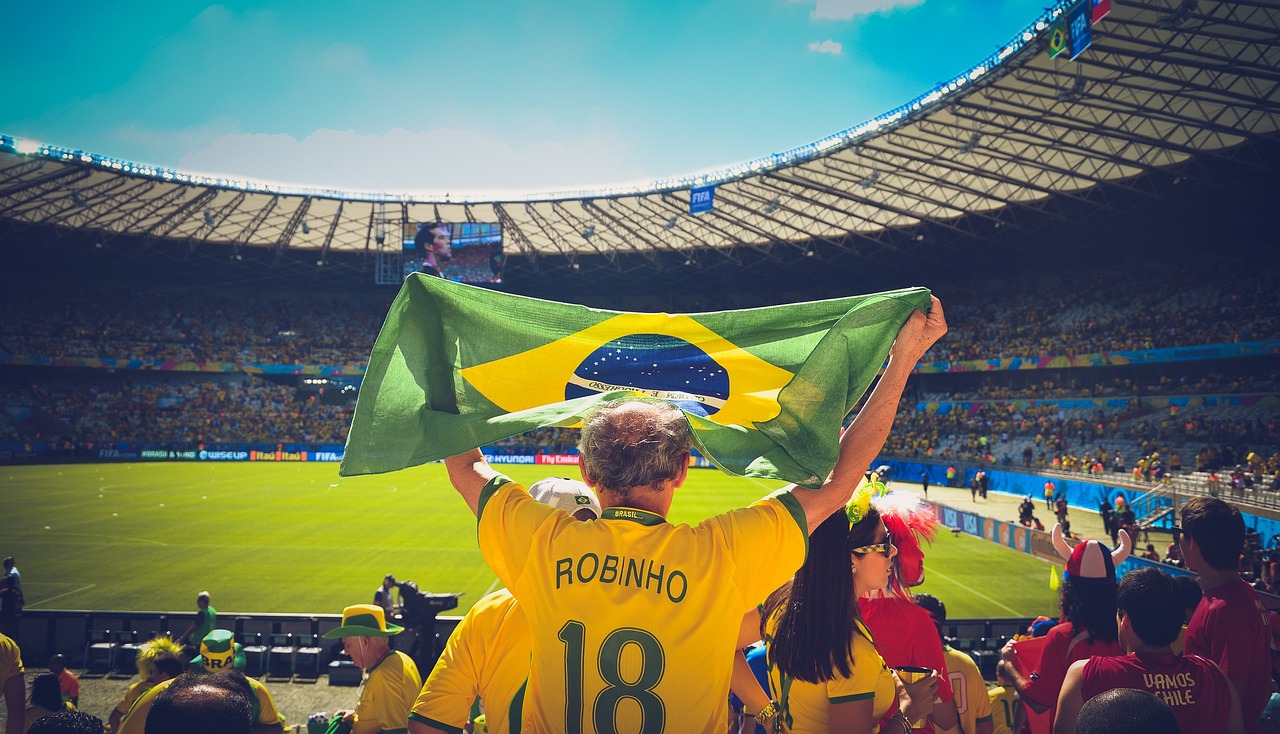
Architectural Marvels: Exploring Brazil’s Historical Heritage
Brazil is rich in cultural diversity and historical heritage, and its architectural marvels are a testament to its fascinating past. Brazil’s architecture reflects a blend of indigenous, European, and African influences, from colonial structures to modern masterpieces, making it a unique and captivating destination for architectural enthusiasts.
One of Brazil’s most iconic architectural landmarks is the Christ the Redeemer statue, located atop the Corcovado Mountain in Rio de Janeiro. Standing 98 feet tall, with arms outstretched, the figure has become a symbol of Brazilian identity and a UNESCO World Heritage Site. Its Art Deco design and panoramic views of the city make it a popular tourist attraction and a testament to the country’s religious and artistic heritage.
Another UNESCO World Heritage Site, the Historic Centre of Salvador de Bahia, is a treasure trove of colonial architecture. Salvador, Brazil’s first capital, boasts well-preserved Portuguese colonial buildings, colorful facades, and intricate churches. Pelourinho, a historic neighborhood within Salvador, is renowned for its cobblestone streets and baroque-style buildings, offering visitors a journey back in time.
In the city of Brasília, a modern architectural wonder awaits. Planned and designed by architect Oscar Niemeyer, Brasília became the capital of Brazil in 1960. The city’s urban design and futuristic buildings symbolize the country’s ambition and progress. The Metropolitan Cathedral of Brasília, with its stunning hyperboloid structure, and the National Congress, featuring two striking domed buildings, are among the examples of modernist architecture in the city.
Moving further back in history, the city of Ouro Preto in Minas Gerais is a living museum of baroque architecture. Its well-preserved colonial buildings and ornate churches adorned with gold leaf work showcase the wealth and luxury of the region during the gold rush era in the 18th century.
The Amazon Rainforest region also holds architectural treasures from pre-Columbian times. Indigenous tribes have created fascinating structures, such as the Maloca communal houses and the stilts-based houses of the Amazonian river communities. These unique architectural expressions demonstrate the coexistence of humans with their natural environment and showcase the indigenous cultural heritage.
Brazil’s historical heritage is a tapestry of architectural wonders narrating its diverse cultural influences and historical epochs. From colonial to modern structures, each architectural gem offers visitors a glimpse into Brazil’s past and its ongoing journey of cultural evolution. Preserving and appreciating these architectural marvels is crucial in ensuring that future generations can continue to learn from and celebrate Brazil’s unique heritage.
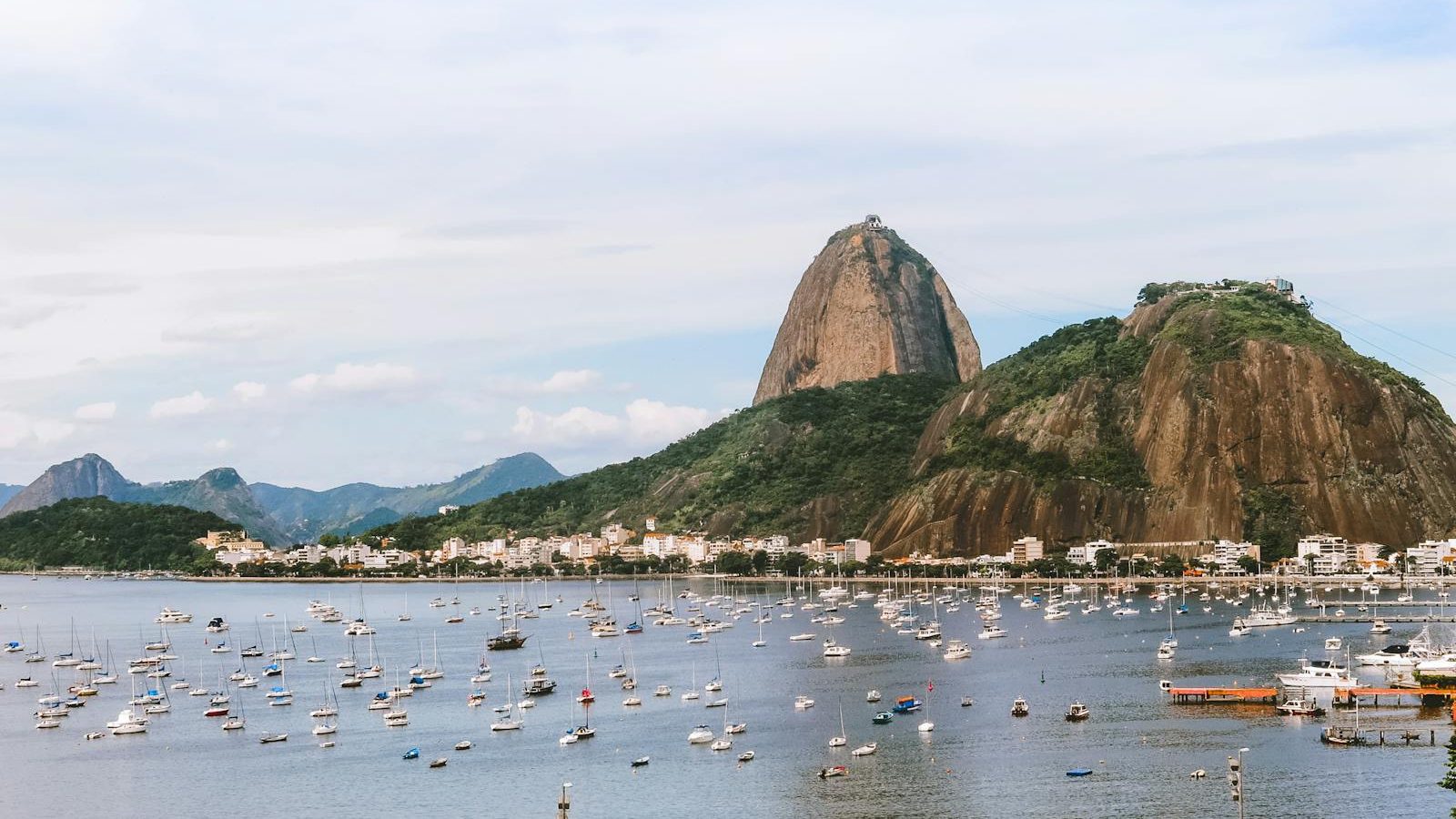
Gastronomy: A Fusion of Flavors and Culinary Delights
Gastronomy in Brazil is a rich tapestry of diverse flavors and culinary delights, reflecting the country’s vast cultural heritage and regional influences. Brazilian cuisine combines indigenous, African, European, and Asian culinary traditions, creating a colorful and varied gastronomic experience.
One of the most iconic dishes in Brazilian cuisine is Feijoada, a hearty stew made with black beans and various cuts of pork and beef, served with rice, collard greens, farofa (toasted cassava flour), and orange slices. This dish originated from the Afro-Brazilian community and is a perfect example of the blending of cultures in Brazilian gastronomy.
Churrasco, or Brazilian barbecue, is another beloved culinary tradition. It involves grilling different types of meat, often skewered and seasoned with rock salt to bring out the natural flavors. Churrascarias, Brazilian barbecue restaurants, are famous for their all-you-can-eat offerings and are a favorite among locals and tourists alike.
For seafood lovers, the northeastern region of Brazil offers a seafood feast called Moqueca. It is a flavorful fish stew made with coconut milk, palm oil (dendê), tomatoes, onions, and various herbs and spices. It is typically served with rice and pirão, a thick fish broth.
Brazil’s street food scene is a delightful aspect of its gastronomy. Acarajé, originating from Bahia, is a popular street snack made from deep-fried black-eyed pea fritters stuffed with shrimp, spicy vatapá sauce, and caruru, a paste made with okra. Similarly, Coxinha, a teardrop-shaped savory pastry filled with shredded chicken, is a popular street food item in the country.
The Amazon rainforest provides a unique array of ingredients to Brazilian cuisine. Tucupi, a yellowish broth extracted from wild manioc root, is used in dishes such as Tacacá, a traditional Amazonian soup served with shrimp and jambu leaves, known for its tingling sensation on the tongue.
Brazil is also famous for its sweet treats, such as Brigadeiro, a chocolate truffle made with condensed milk and cocoa powder, and Pão de Queijo, small cheese bread balls made with tapioca flour and cheese, often served as a snack or breakfast option.
In addition to its diverse flavors, Brazilian gastronomy is celebrated for its friendliness and sense of community. Sharing a meal with family and friends is essential to Brazilian culture, and festivals and gatherings often revolve around food and drink.
Brazilian gastronomy is a delightful journey through a fusion of flavors and culinary delights, celebrating the country’s cultural richness and diversity. Whether it’s savoring traditional dishes or exploring its talented chefs’ innovative and contemporary offerings, Brazil’s culinary scene is sure to leave a lasting impression on any food enthusiast.
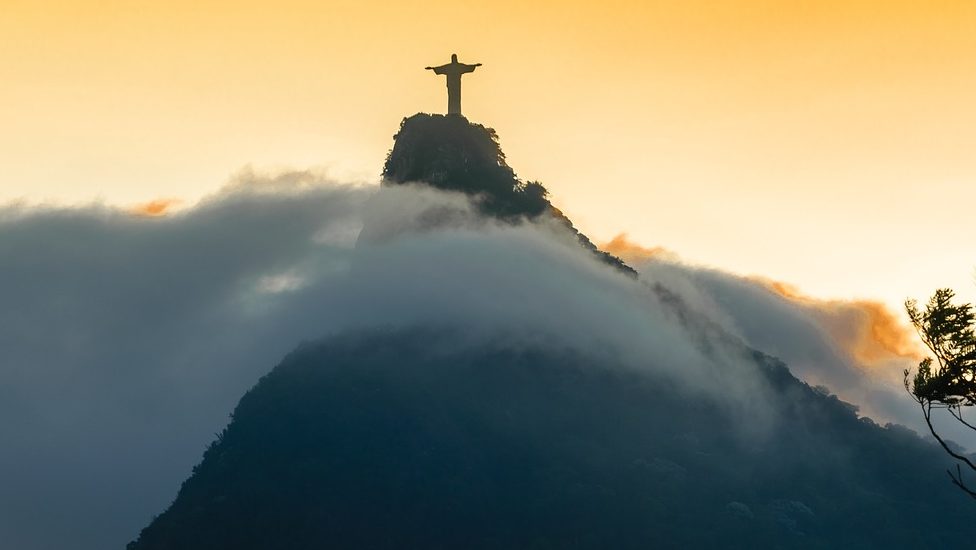
Festivals and Carnivals: The Exuberant Spirit of Brazil
Festivals and Carnivals: The Exuberant Spirit of Brazil
Brazil is a country known for its vibrant and exuberant spirit, and nowhere is this more evident than in its festivals and carnivals. These lively celebrations are an integral part of Brazilian culture, uniting people from all walks of life in a joyous display of music, dance, and colorful costumes.
One of Brazil’s most famous and iconic festivals is Carnival, a nationwide extravaganza that takes place in the days leading up to Lent. Rio de Janeiro hosts one of the world’s largest and most renowned Carnival celebrations. Samba schools prepare all year to participate in the Samba Parade, a grand competition where each school showcases its elaborate floats, intricate costumes, and impressive choreography. Thousands of performers, known as “sambistas,” dance and sing to the infectious rhythms of samba music, captivating locals and visitors alike. Carnival’s energy and passion are contagious, making it an unforgettable experience for everyone involved.
Beyond Carnival, Brazil hosts numerous regional festivals that reflect the country’s rich cultural diversity. For instance, in Salvador, Bahia, the “Carnaval de Salvador” brings together Afro-Brazilian rhythms, including axé, samba-reggae, and frevo, creating a unique and pulsating atmosphere. The streets come alive with parades, blocos (street bands), and trios elétricos (sound trucks), where revelers dance and celebrate until the early morning.
In the northern city of São Luís, the “Bumba Meu Boi” festival showcases a mix of indigenous, African, and Portuguese traditions. The festival centers around a theatrical performance that tells the story of an ox brought back to life by a folk healer. Colorful costumes, vibrant dances, and traditional music characterize this enchanting celebration.
Brazilian festivals are not only about music and dance; they also pay tribute to religious beliefs and cultural heritage. “Festa Junina” is a series of country-style festivals held throughout June, featuring bonfires, folk dance quadrilles, and traditional foods like corn-based delicacies. These festivals have deep roots in rural Brazil, honoring Catholic saints such as Saint Anthony, Saint John the Baptist, and Saint Peter.
The exuberant spirit of Brazilian festivals and carnivals reflects the country’s zest for life, unity, and diversity. These celebrations are more than just entertainment; they are essential to Brazil’s identity, fostering a sense of community and pride. Through music, dance, and cultural expression, Brazilians open their hearts to the world, inviting everyone to experience the richness of their traditions and the warmth of their hospitality.
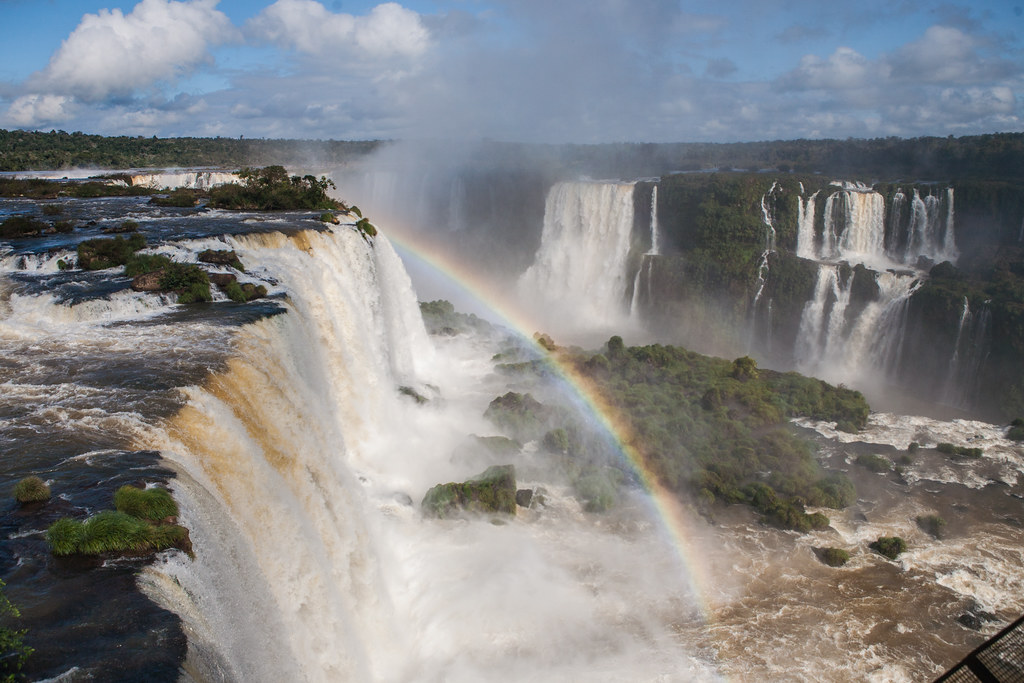
Music and Dance: The Rhythm that Moves the Nation
In Brazil, music and dance are more than just art forms – they are integral to the nation’s cultural identity, history, and social fabric. With a rich diversity of musical genres and dance styles, Brazil pulsates with rhythm, capturing the hearts of locals and people worldwide.
One of the most iconic musical genres in Brazil is Samba. Originating in the neighborhoods of Rio de Janeiro in the early 20th century, Samba quickly became a symbol of Brazil’s exuberant spirit. Its infectious beats, syncopated rhythms, and lively dance moves reflect the country’s diverse cultural heritage, with influences from African, European, and Indigenous traditions. The annual Rio Carnival showcases the pinnacle of Samba’s cultural significance, where millions gather to dance, sing, and celebrate in a riot of colors and music.
Another prominent genre is Bossa Nova, which emerged in the late 1950s. Characterized by its smooth and sophisticated style, Bossa Nova gained international fame through artists like Antonio Carlos Jobim and João Gilberto. The genre’s gentle melodies and subtle guitar rhythms evoke a sense of calmness and allure, attracting listeners from all corners of the globe.
Forró is yet another genre that has a special place in the hearts of Brazilians. Hailing from the Northeastern region, Forró has a more rustic feel, driven by the vibrant sounds of accordion, triangle, and Zumba drum. It brings people together in joyful gatherings, fostering community and belonging.
Brazilian dance forms are equally captivating. The most famous is the energetic and sensual Samba dance, characterized by hip sways, quick footwork, and elaborate costumes. Beyond Samba, there’s also the Capoeira, a unique blend of martial art and dance developed by enslaved Africans. It is a captivating display of acrobatic movements and a powerful symbol of resistance and cultural preservation.
The impact of Brazilian music and dance goes beyond mere entertainment. It has contributed to shaping the nation’s cultural identity, promoting unity among its people, and influencing various aspects of Brazilian life. From joyous celebrations to poignant expressions of history and struggle, music and dance continue to play a vital role in the daily lives of Brazilians.
Moreover, the global appeal of Brazilian music has made it a powerful cultural export, introducing the world to the nation’s unique heritage. Artists like Gilberto Gil, Caetano Veloso, and Marisa Monte have gained international recognition, spreading the magic of Brazilian rhythms far beyond its borders.
In conclusion, music and dance are the rhythmic heartbeats that move the nation of Brazil. They embody the country’s diverse cultural heritage and serve as a universal language, uniting people and conveying emotions in a way that transcends barriers. As Brazil continues to evolve, its music and dance will remain an enduring force, touching the souls of all who hear and experience its enchanting rhythms.

Wildlife and Ecotourism: An Oasis of Biodiversity
Brazil is known for its rich biodiversity and stunning natural landscapes, making it an ideal destination for ecotourism. The vast and diverse ecosystems in Brazil support abundant wildlife, making it an oasis of biodiversity. From the Amazon rainforest to the Pantanal wetlands and the Atlantic Forest, travelers have countless opportunities to experience and appreciate nature’s wonders.
The Amazon rainforest, often called the “Lungs of the Earth,” is the world’s largest tropical rainforest and home to an astonishing array of plant and animal species. It houses countless mammals, reptiles, birds, and insects, including iconic creatures like jaguars, giant river otters, macaws, and toucans. Exploring the Amazon through responsible ecotourism can give visitors a deep appreciation for its ecological significance and the importance of conserving this fragile environment.
Another biodiversity hotspot in Brazil is the Pantanal, the world’s largest tropical wetland. This unique ecosystem is a wildlife sanctuary, especially during the region’s wet season, when it transforms into a vast, flooded landscape. The Pantanal is a paradise for birdwatchers, boasting more than 650 bird species and an impressive population of caimans, capybaras, and elusive jaguars.
The Atlantic Forest, a once extensive rainforest stretching along Brazil’s coastline, is now reduced to fragmented patches. Despite this, it still harbors an exceptional variety of flora and fauna, with countless endemic species found nowhere else on Earth. Ecotourism initiatives in the Atlantic Forest focus on promoting conservation and sustainable practices to protect the remaining biodiversity.
Ecotourism plays a vital role in Brazil’s economy and conservation efforts. Responsible ecotourism practices, such as low-impact accommodations, guided tours led by knowledgeable local guides, and strict adherence to environmental regulations, help ensure that tourism activities do not harm wildlife and their habitats.
Visitors engaging in ecotourism experiences can contribute directly to conservation efforts by supporting local communities, national parks, and conservation organizations. Tourists actively safeguard Brazil’s biodiversity for future generations by channeling resources into these initiatives.
However, ecotourism must be approached with sensitivity and caution to avoid inadvertently causing harm to the very ecosystems and wildlife it aims to protect. Conservation-minded travelers, responsible tour operators, and governmental regulations can strike a balance between showcasing Brazil’s natural wonders and preserving its ecological integrity.
In conclusion, Brazil’s wildlife and ecotourism offerings provide a unique opportunity for travelers to immerse themselves in the splendor of nature. By fostering a harmonious relationship between tourism and conservation, Brazil can remain an oasis of biodiversity and a shining example of how responsible travel can positively impact the world’s natural treasures.
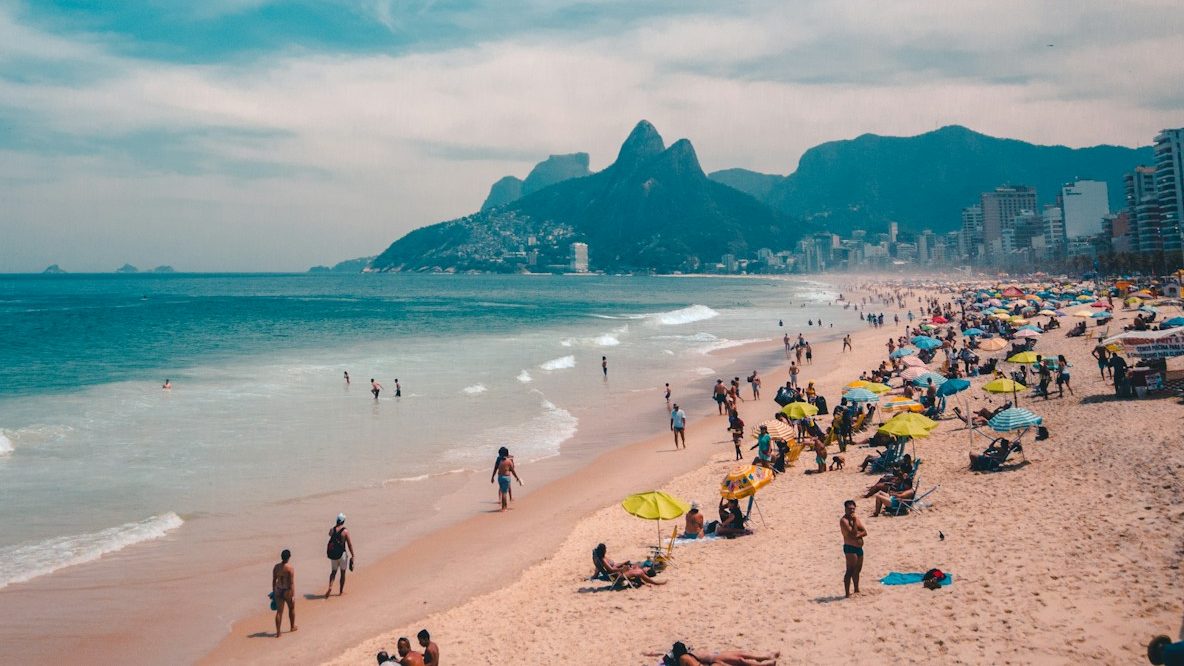
Warm Hospitality: Experiencing Brazilian Joie de Vivre
The warm hospitality and the Brazilian “Joie de Vivre” are central elements of the vibrant culture in Brazil. When visitors step foot in the country, they are greeted with genuine smiles, open arms, and a warm embrace. Brazilians are known for their friendly and welcoming nature, making travelers feel part of the family.
One of the pillars of Brazilian hospitality is their love for sharing good food and drinks. Whether it’s a traditional feijoada (a hearty black bean stew) or a delicious barbecue, mealtimes celebrate flavors and togetherness. Families and friends often gather around the table, creating a lively atmosphere of laughter and conversation.
Music and dance are also integral to the Brazilian way of life—the rhythms of samba, bossa nova, and forró infuse the air with infectious energy. Visitors are encouraged to join the dance, regardless of their skill level, as Brazilians are always happy to share their passion for music and movement.
In Brazil, the community is strong, and strangers are often treated as friends. Locals will go out of their way to help others, offer recommendations, and ensure visitors have a memorable experience. This spirit of camaraderie fosters a sense of belonging and makes tourists feel at home in a foreign land.
Another aspect of Brazilian hospitality is the concept of “saudade,” a nostalgic longing for something or someone. This bittersweet sentiment reflects the profound connections Brazilians forge with those they meet. It demonstrates their emotional depth and genuine interest in developing meaningful relationships with others.
The warmth of Brazilian hospitality is evident in bustling metropolises like Rio de Janeiro and São Paulo or the serene coastal towns. Visitors often leave with beautiful memories of the country’s stunning landscapes and enduring affection for the people they encountered.
In conclusion, experiencing the Brazilian Joie de Vivre is a journey into a world of vibrant culture, warm embraces, and heartfelt connections. The genuine hospitality and zest for life found in Brazil leave an indelible mark on travelers, making it a destination cherished by those fortunate enough to have experienced its magic.
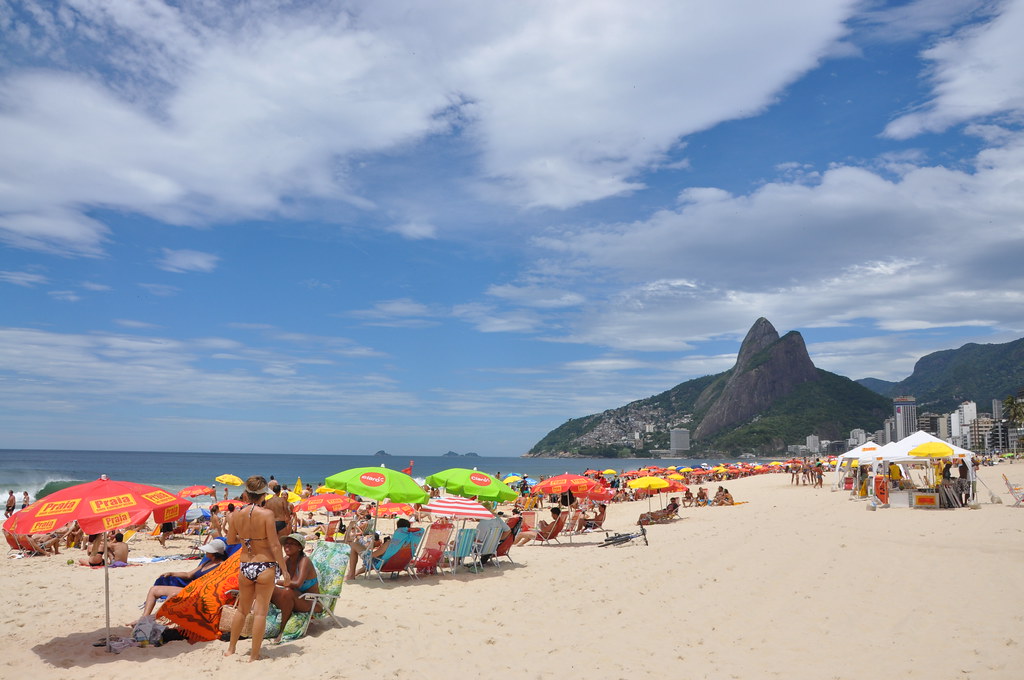
Conclusion:
Brazil, with its cultural richness, awe-inspiring landscapes, and warm hospitality, offers a transformative experience that will stay with you long after you leave. From the rhythms of samba to the wonders of the Amazon Rainforest, Brazil invites you to embark on a journey of discovery and immerse yourself in its vibrant tapestry of traditions, nature, and history. Prepare to be captivated by the beauty and diversity that make Brazil a truly remarkable destination.
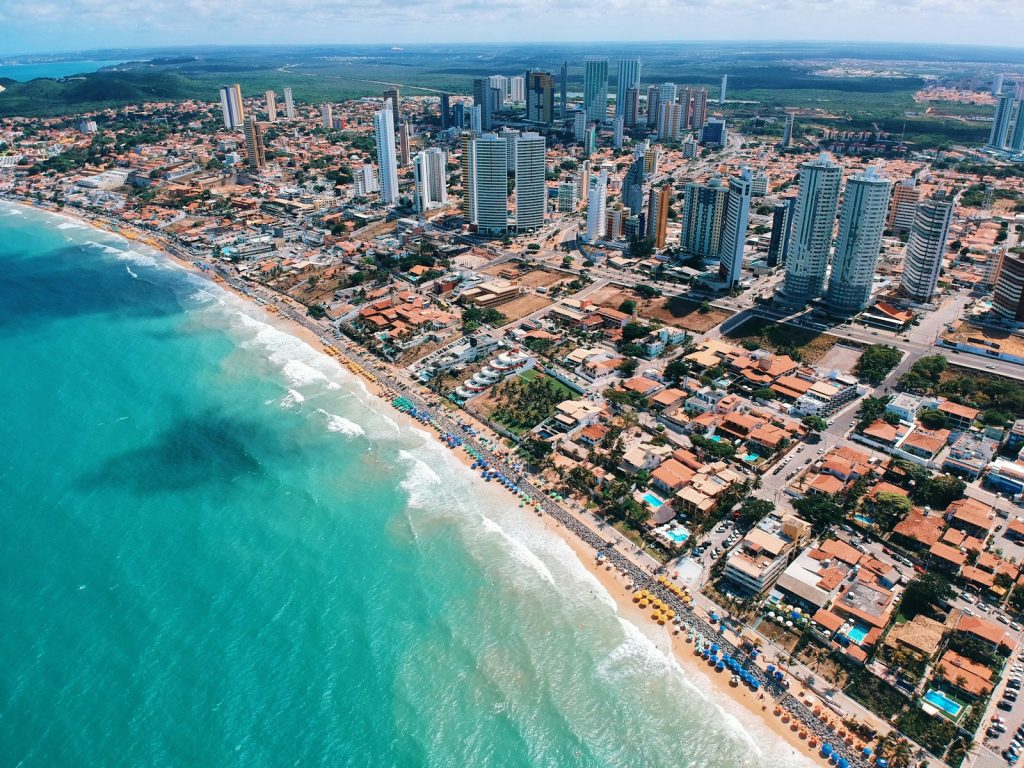
FAQ
Q: Where is Brazil located?
A: Brazil is located in South America, bordered by ten countries: Argentina, Bolivia, Colombia, Guyana, Paraguay, Peru, Suriname, Uruguay, Venezuela, and French Guiana (an overseas territory of France).
Q: What is the capital of Brazil?
A: The capital city of Brazil is Brasília. It was officially inaugurated as the capital in 1960, replacing Rio de Janeiro.
Q: What is the population of Brazil?
A: As of my knowledge cutoff in September 2021, the population of Brazil is approximately 213 million people, making it the fifth most populous country in the world.
Q: What is the official language of Brazil?
A: The official language of Brazil is Portuguese. It is the most widely spoken language in the country.
Q: What is the currency used in Brazil?
A: The currency used in Brazil is the Brazilian Real (BRL). It is denoted by the symbol “R$.”
Q: What are some popular tourist destinations in Brazil?
A: Brazil offers a diverse range of tourist destinations. Some popular ones include Rio de Janeiro with its iconic landmarks like Christ the Redeemer and Copacabana Beach, the Amazon Rainforest, the stunning Iguazu Falls, Salvador da Bahia, known for its rich Afro-Brazilian culture, and the Pantanal wetlands, among many others.
Q: Is Brazil a safe country for tourists?
A: Brazil, like any other country, has areas that require caution and attention to personal safety. It is advisable to research the safety conditions of specific regions and follow travel advisories issued by your government. Taking standard precautions such as avoiding isolated areas at night and keeping an eye on personal belongings can help ensure a safe trip.
Q: What is the weather like in Brazil?
A: Due to its large size, Brazil experiences diverse climates across its regions. Generally, Brazil has a tropical climate with variations depending on factors such as altitude and proximity to the coastline. The northern areas are typically hot and humid, while the southern regions have more temperate weather with defined seasons.
Q: What is the cuisine of Brazil like?
A: Brazilian cuisine is known for its diverse flavors and influences. It reflects the country’s indigenous, African, and European roots. Popular dishes include feijoada (a black bean stew with pork), pão de queijo (cheese bread), acarajé (deep-fried balls made from black-eyed pea dough), and churrasco (barbecue). Brazil is also famous for its coffee production.
Q: What is the predominant religion in Brazil?
A: The predominant religion in Brazil is Christianity, with most of the population identifying as Roman Catholic. However, Brazil is a multicultural and religiously diverse country, with significant people of other Christian denominations and followers of Afro-Brazilian religions, Spiritism, and other belief systems.
Please note that the information provided here is based on my knowledge cutoff in September 2021, and there may have been updates or changes since then. It’s always a good idea to refer to the latest sources and consult official travel advisories when planning a trip to Brazil.
Watch Video
Read also
- Bosnia and Herzegovina: Exploring the Rich Heritage and Natural Beauty
- Bolivia: Discover the Rich Culture and Natural Beauty
- Benin: A Window into West Africa’s Cultural Heritage
- Belize: A Tropical Paradise of Natural Wonders and Rich Culture
- Belgium: Exploring through History, Culture, and Gastronomy
- Belarus: Unveiling the Heart of Eastern Europe

